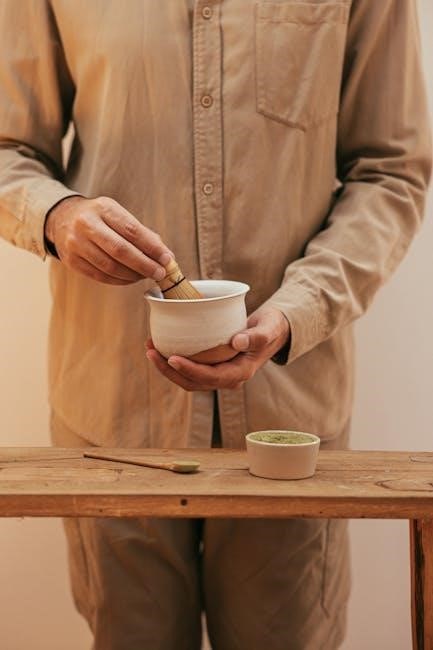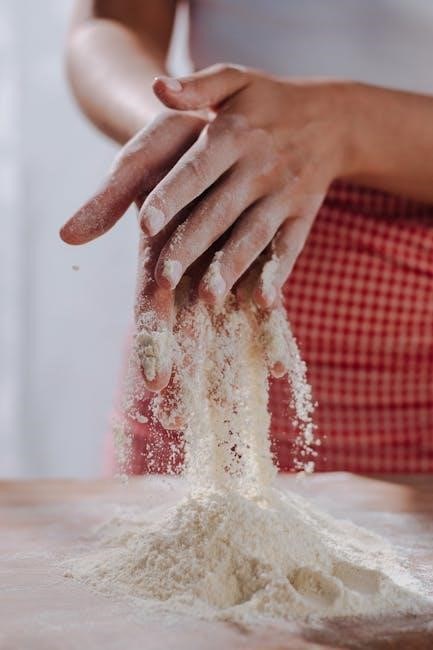
Bifen IT is a versatile insecticide containing bifenthrin, effective against various pests. Proper mixing ensures safety and efficacy. This guide provides detailed steps for correct preparation and application.
What is Bifen IT?
Bifen IT is a broad-spectrum insecticide containing the active ingredient bifenthrin. It is widely used for controlling crawling pests, termites, and lawn pests. Known for its effectiveness, Bifen IT is popular among professionals and homeowners due to its fast-acting and long-lasting residual properties. It can be applied indoors, outdoors, and in lawn and garden settings, making it a versatile solution for pest management. Bifen IT is available as an emulsifiable concentrate, requiring proper mixing with water to achieve the desired dilution for specific applications.
Importance of Proper Mixing
Proper mixing of Bifen IT is crucial for maximizing its effectiveness and ensuring safety. Incorrect dilution can lead to reduced pest control efficacy or potential harm to plants and non-target organisms. Following the recommended mixing ratios ensures the solution is applied correctly, providing optimal pest control while minimizing environmental impact. Proper mixing also prevents over-application, which can violate regulatory standards. Always adhere to the product label instructions for dilution rates specific to your application, whether for crawling pests, termites, or lawn treatments, to achieve the best results safely and efficiently.

Materials Needed for Mixing Bifen IT
Essential materials include Bifen IT insecticide, water, a clean measuring cup, a spray tank, and personal protective equipment (PPE). Ensure all equipment is clean and functional.
Equipment Required
To mix Bifen IT effectively, you’ll need a clean spray tank, a measuring cup, and a stir stick or agitator. Protective gloves and goggles are essential for safety. A pump or mechanical agitation system ensures proper mixing. Use a clean, chemical-resistant container to prevent contamination. A strainer can help filter the solution if needed. Ensure all equipment is free from residues of other chemicals. Regularly inspect and maintain your equipment to guarantee accurate measurements and even distribution of the insecticide. Properly calibrated equipment is crucial for achieving the desired concentration and application efficiency.
Personal Protective Equipment (PPE)
Wear long sleeves, long pants, and closed-toe shoes to minimize skin exposure. Use chemical-resistant gloves and protective eyewear, such as goggles or glasses with a splash guard. A face shield can provide additional protection against splashes. Consider a respirator if working in poorly ventilated areas. Ensure all PPE is clean and free from contaminants. Remove and wash any contaminated clothing immediately after use. Always wash hands thoroughly with soap and water after handling the product. Refer to the product label for specific PPE recommendations to ensure safe handling and mixing.

Safety Precautions
Handle Bifen IT carefully to avoid skin or eye contact. Keep away from food, water, and pets. Ensure good ventilation during mixing and application.
Handling the Product Safely
When handling Bifen IT, wear long sleeves, gloves, and protective eyewear to prevent skin and eye contact. Avoid inhaling the product by working in well-ventilated areas. If accidental exposure occurs, wash affected areas with soap and water immediately. In case of eye contact, flush with water for at least 15 minutes and seek medical attention if irritation persists. Keep the product out of reach of children and pets to ensure a safe working environment.
Protecting the Environment
To protect the environment, avoid applying Bifen IT near water sources, including lakes, rivers, or ponds, to prevent contamination. Prevent spray drift onto non-target areas, such as gardens or wildlife habitats. Do not apply the product during heavy rain or when runoff is likely, as this can lead to chemical movement into waterways. Dispose of unused mixed solution and empty containers according to local regulations to minimize environmental impact. Always follow label instructions to ensure safe and responsible use of the product.

Dilution Rates for Different Applications
Dilution rates vary based on pest type and severity. General crawling pests typically require 0.5 to 1 oz per gallon of water, while termite treatments may need higher concentrations. Always follow label instructions for specific applications to ensure effectiveness and safety.
General Crawling Pests
For controlling general crawling pests like ants and spiders, mix 0.5 to 1 ounce of Bifen IT with 1 gallon of water. This concentration is effective for perimeter treatments around homes and buildings. Apply the solution along the foundation, approximately 3 feet up and 3 feet out from the structure. Ensure thorough coverage but avoid excessive runoff. This mixture helps create a barrier that repels and eliminates crawling insects, providing long-lasting protection against pests. Always follow label instructions for optimal results and safety.
Termite Treatments
For termite treatments, mix 1 ounce of Bifen IT with 1 gallon of water. This solution is ideal for creating a barrier around foundations and in pre-construction applications. Apply the mixture along concrete slabs and trenching areas, ensuring thorough coverage. The solution should be poured slowly into trenches to spread evenly, typically every 10 linear feet. This treatment helps prevent termite infestations by establishing a long-lasting chemical barrier. Always follow label instructions for specific application rates and safety guidelines to ensure effective termite control and environmental protection.
Lawn and Garden Applications
For lawn and garden applications, mix 0.5 to 1 ounce of Bifen IT with 1 gallon of water. This solution effectively controls pests like ants, spiders, and other insects. Apply the mixture evenly across the lawn, ensuring thorough coverage. The dilution rate allows for a yield of 160-320 gallons per quart, making it suitable for large areas; Avoid spraying during peak sun or when plants are under stress. This method helps protect plants and turf from damaging pests while maintaining ecosystem balance. Always follow label guidelines for optimal results and environmental safety.
Step-by-Step Mixing Instructions
Fill the tank halfway with water, add the recommended amount of Bifen IT, mix thoroughly, and complete filling. Ensure proper agitation before application for optimal results.
Preparing the Tank
Start by filling the tank halfway with water to prevent overflow. Add the measured amount of Bifen IT slowly, ensuring the product is fully incorporated. Use a measuring cup for accuracy to avoid overfilling or underdosing. Once added, maintain continuous agitation to ensure uniform distribution of the insecticide. Avoid adding other products until the tank mix is stable. Always double-check the product label for specific instructions tailored to your application needs. Proper tank preparation ensures effective pest control and safety during use. This step is crucial for achieving the desired concentration and application success.
Adding Bifen IT
Measure the recommended amount of Bifen IT using a calibrated measuring cup or device. Pour the product slowly into the partially filled tank while maintaining agitation to ensure even distribution. For general applications, mix 1 oz of Bifen IT with 127 oz of water to achieve a 0.06% emulsion. Adjust the dosage based on pest severity and application type, following label instructions. Avoid overfilling the tank before adding the product. Once added, continue agitation to prevent settling and ensure a uniform solution. Proper measurement and addition are critical for effective pest control and safety. Always refer to the product label for specific rates.
Agitation and Application
After adding Bifen IT to the tank, maintain continuous agitation to ensure the solution remains well-mixed. This prevents settling and ensures uniform pesticide distribution. Apply the mixture promptly, as delays can reduce effectiveness. Use appropriate spray equipment to cover the target area evenly, following label-recommended rates and methods. For outdoor treatments, apply along foundations, lawns, and gardens, while indoor applications focus on pest-prone areas like baseboards and cracks. Proper agitation and timely application are essential for optimal results and safety. Always follow specific application instructions for different pest control scenarios to maximize efficacy. Ensure thorough coverage without over-application to avoid environmental impact.
Common Applications and Use Cases
Bifen IT is widely used for perimeter treatments, indoor pest control, and lawn applications. It effectively targets crawling pests, termites, and garden insects, ensuring comprehensive protection;
Perimeter Treatment
Perimeter treatment involves applying Bifen IT around the home’s foundation to create a barrier against pests. Mix 0.5 to 1 oz of Bifen IT per gallon of water and spray 3 feet up the foundation and 3 feet out from the base. This method targets crawling pests like ants, spiders, and insects. Ensure even coverage and reapply as needed based on pest activity and weather conditions. Always follow label instructions for optimal results and safety.
Indoor Pest Control
Bifen IT is effective for indoor pest control, targeting ants, spiders, and other pests. Mix 1 fl oz of Bifen IT with 1 gallon of water for general indoor use. Apply the solution to cracks, crevices, baseboards, and door thresholds. Avoid spraying directly on furniture or countertops unless specified. Use a low-pressure sprayer to minimize drift. For severe infestations, adjust the ratio up to 1.5 fl oz per gallon. Always wear gloves and protective eyewear during application. Allow the solution to dry before letting pets or children into treated areas.

Compatibility with Other Products
Bifen IT is tank mix compatible with insect growth regulators (IGRs) like Tekko Pro and select insecticides, enhancing pest control efficacy without compromising performance.
Tank Mix Compatibility
Bifen IT is compatible with insect growth regulators (IGRs) like Tekko Pro and certain insecticides, allowing for combined use to enhance pest control effectiveness. Always ensure compatibility by consulting the product labels and conducting a small-scale test before mixing. This ensures no adverse reactions occur, maintaining product performance and safety. Proper tank mixing can optimize treatment outcomes, especially in challenging pest scenarios, while adhering to all safety guidelines.
IGRs and Insecticides
Bifen IT can be paired with insect growth regulators (IGRs) like Tekko Pro to disrupt pest life cycles. This combination enhances control by preventing pests from reproducing and maturing. When mixing with other insecticides, select products with complementary modes of action to avoid antagonism. Always follow label instructions for specific compatibility and dosage rates to ensure effective pest management while maintaining environmental and human safety standards. Proper integration of IGRs and insecticides with Bifen IT can lead to comprehensive pest control strategies.
Storage and Disposal
Store Bifen IT in its original container, away from light, in a cool, dry place. Dispose of unused product and containers according to local regulations, avoiding water contamination.
Proper Storage Conditions
Bifen IT should be stored in its original container, tightly sealed, and kept in a cool, dry place away from direct sunlight and heat sources. Ensure the container is stored upright to prevent leakage. The storage area should be well-ventilated and inaccessible to children, pets, and unauthorized personnel. Avoid storing near food, feed, or other pesticides. The ideal temperature range for storage is between 40°F and 90°F (4°C and 32°C). Always follow the label instructions for specific storage recommendations to maintain product integrity and safety.
Disposal Guidelines
Dispose of Bifen IT and its container in accordance with federal, state, and local regulations. Do not reuse the container for any other purpose. If the container is empty, drain it thoroughly and dispose of it as a hazardous waste. For partially filled containers, secure the lid tightly and dispose of it through an approved hazardous waste facility. Never discard Bifen IT in sewers, waterways, or drains, as it may contaminate water sources. Always follow the product label instructions and consult local authorities for specific disposal requirements to ensure environmental safety and compliance with the law.